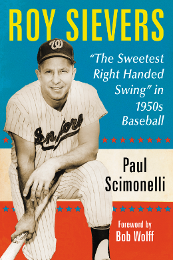Monday’s 2014 season opener against the New York Mets will be another milestone for Stephen Strasburg. With his third consecutive opening day start, he will match Livan Hernandez for the most in modern Washington Nationals history, and move into a tie with Hernandez and Jeff Fassero for the third-longest opening day start streak in the history of the Nationals/Montreal Expos franchise. Only Steve Rogers, with nine overall and eight consecutive from 1976-1983, and Dennis Martinez, with six consecutive from 1988-1993 have taken the mound for the opening more frequently and consistently than Strasburg.
That says a lot about the confidence that the organization has in the 25-year-old right-hander, who has fewer career starts and victories (75/29) than rotation mates Jordan Zimmermann (113/43), Gio Gonzalez (153/70) and Doug Fister (127/44). But since blazing onto the scene with a 13-strikeout performance in his debut in 2009, Strasburg has shown that when he is healthy and on his game, he is one of the elite pitchers in baseball.
Strasburg’s 2014 season was unusual for any pitcher though. Despite a 3.00 ERA and a 1.05 WHIP, he had a losing record, victimized more than any other Nationals starter by the team’s subpar offense. But despite his ability to light up radar guns and strike out batters, the question with Strasburg has always been his durability. Averaging just over 5 2-3 innings per start in his big league career, Strasburg has just one complete game. He and the Nats were also mired in controversy over the team’s decision to shut him down as the team approached the playoffs in 2012.
It remains to be seen whether new manager Matt Williams will try to have his ace pitch deeper into games this season. With a seemingly deep bullpen behind him, ut seems likely that for at least the first few starts, Williams won’t risk letting him get into trouble after the sixth inning for at least the first month of the season.
Gonzalez’ win total dropped from 21 in 2012 to 11 last season as his ERA rose from 2.89 to 3.36. More disturbingly, he allowed 17 home runs last season after yielding just nine in his first season in the National League. That represents a reversion to hi trend of giving up double-digit home runs annually in Oakland’s massive O.co Coliseum. His opponents batting average as a major-league career high .231, although he did keep his walks down, allowing 76 for the second straight year while throwing just five fewer innings. This after consistently surrendering at least 90 in each of his first two seasons in Oakland. Gonzalez is vowing to be more patient this season, and the Nats will need him to do just that and pitch more like he did in 2012 if they are to get back to the top of the NL East.
Zimmermann was arguably the Nationals’ best pitcher over the past two seasons, posting 31 wins, including a career best 19 last season, and a 3.10 ERA. Known for inducing ground balls, he is the type of pitcher who thrives in Nationals Park. He was 12-3 with a 2.61 ERA and a pair of shutouts at home last season. The converse, though, was that he was just 7-6 with a 4.08 ERA in away games. His road woes included a disastrous May 29 outing in Baltimore, in which he allowed seven earned runs in six innings, blowing a 6-2 lead in the seventh inning. The three home runs he allowed that night wasted a three-homer performance by Ryan Zimmerman. If Zimmermann can come close to his Nationals Park numbers rom last season and improve on the road, he might well earn that long-term contract extension that has been discussed for the past two seasons.
Fister is starting the season in the disabled list after missing most of the team’s spring training games, first with elbow inflammation and then a strained lat muscle. It’s not known how serious the lat injury is, but at the very least, he will need a few rehab starts to get his arm in shape for the majors. When healthy, he s exactly the type of pitcher the Nats need, with a ground ball ratio over 1.5 the past two seasons. But its also possible that this type of injury could derail his season as it did Ross Detwiler’s in 2013.
That leaves Tanner Roark and Taylor Jordan to fill the last two spots in the rotation to start the season. Roark was a late-season spark for the team last season as it struggled to find a decent fifth starter, going 3-1 with a 1.74 ERA in five starts and 4-0 with a 1.19 ERA in 22 2-3 innings of relief. He yielded just 11 walks in 53 2-3 total innings. Jordan suffered some hard luck as he went 1-3 with a 3.66 ERA in 51 2-3 innings over nine starts. His best outing was July 28 against the Mets, when he earned his first major league win, allowing five hits and one walk in six innings, striking out seven. But is was one of just two outings in the season when he gave up fewer than one hit per inning.
Rafael Soriano will be back in the closer’s role for 2014, although much has been made of his declining strikeout totals (from 69 in 67 2-3 innings in 2012 to 51 in 66 2-3 innings last season) and fastball velocity. Perhaps he was getting used to pitching again in the National League after three seasons in the AL. But he was there when the Nats needed him at the end of the season, closing 12 straight games with a 1.17 ERA. Soriano’s save opportunities will likely be somewhat limited this season, though. After finishing 58 games last season, he needs 62 more this season for a $14 million option for 2015 to kick in. With all the pitching talent in the Nats bullpen and farm system, it’s not likely the team will let that happen.
If Sorinao falters or the team is looking for an alternate closer, those duties will likely fall on Tyler Clippard, the setup man who has been Mr. Consistency for the Nats over the past three seasons. In that time, he has allowed just 140 hits and 79 walks in 231 innings. At 29, the veteran right-hander has plenty of arm left.
Drew Storen is back in the big leagues after struggling last season and being sent to the minors to rework his delivery. But after returning to the big leagues in August, he posted ERAs of 2.25 in August and 0.79 in September, with an 0.70 WHIO for the two months combined.
Another model of consistency in the bullpen has been Craig Stammen, who has been a lights out long man since moving to the bullpen full time in 2011. He has put up ERAs of 0.87, 2.23 and 2.76 over a total of 180 1-3 innings. His ground ball ratio surged to 2.00 last season, making him the perfect guy to bail out a starter who’s been getting knocked around.
The new lefty long man is Detwiler, who, coming off an injury plagued 2013 campaign, was moved to the bullpen in mid spring training. Although Detwiler has performed well a a starter when healthy, he has excelled in relief, such as a stretch if six appearances in 2012 when he allowed two earned runs in 13 1-3 innings. After losing his starting spot briefly to Chien Ming Wang, that performance earned him his old job back. That seems unlikely this season, but if there are injuries to the starters, Detwiler is also a natural candidate to fill in while younger players fill out the pen.
The Nats traded for Jerry Blevins to be their lefty specialist. He allowed 47 hits and 17 walks in 60 innings over 60 games last season with Oakland. Oddly enough, he was more effective against right-handers last season, but in his career, lefties hit just .224 off him.
Rookie Aaron Barrett earned the final spot in the pen over veteran like Ryan Mattheus, Xavier Cedeneo and Erik Davis with a stellar spring training in which he did not allow an earned run or a walk in 10 2-3 innings.
Overall, the Nationals pitching was not quite as good in 2013 as it was in 2012, but just as it was with the hitting, the 3.59 team ERA was just a cut below the five NL playoff teams. Still, if the pitching is at least as good as with was last season, and they see a significant improvement at the plate, it could be enough to propel them back to the top of the NL East and into the postseason once again.






